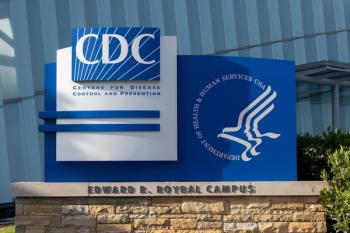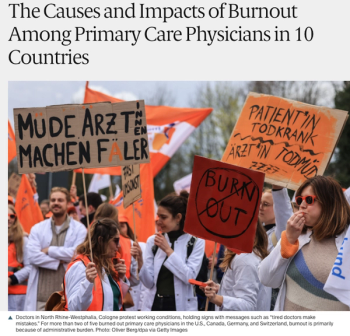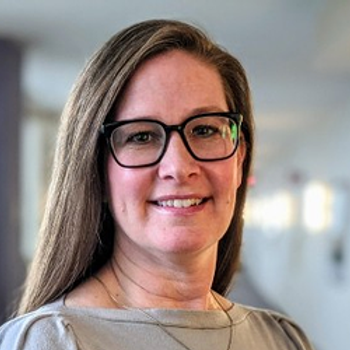
- Medical Economics September 2024
- Volume 101
- Issue 8
Managing patient messages
How one practice experimented with a new workflow
A small study conducted at a primary care practice in Philadelphia found that using medical assistants (MAs) to filter and triage patient
The results of the study — authored by Jennifer N. Lee, MD, FAAFP; Laura Kurash, MD; Max Yang; and Joseph Teel, MD, FAAFP — were published in the Annals of Family Medicine in May 2024.
Medical Economics recently sat down with Lee to discuss the study findings. Lee is medical director at Penn Family Care and vice chair of clinical operations at the Department of Family Medicine and Community Health at the University of Pennsylvania. She is also assistant professor of clinical family medicine and community health at the University of Pennsylvania Perelman School of Medicine. The following transcript was edited for length and clarity.
What motivated you to study the use of certified MAs to manage patient portal messages?
Jennifer N. Lee, MD, FAAFP: One of the things that triggered us to start looking at this is the substantial increase in the volume of messages that we’re seeing, particularly around the COVID-19 pandemic. When you look about 10 years ago, electronic communication to practices didn’t really exist; most people called in by phone. By 2020, 40% of people were engaged in the portal, and then it took off during COVID-19. Now up to 80% of adult patients will engage with a portal, including sending messages.
Lee: Although the electronic
Can you tell us about your study and what you found?
Lee: We looked at using medical assistants to help us manage that first pass of messages. The paradigm for us came from our centralized telephone access protocols. Thinking about the fact that we had administrative support at the telephone level to sort through what was clinical and needed to go to a nurse, what was nonclinical and needed to go to administrative folks, and what could be handled at first pass without physician or PCP involvement, we took those protocols and used those for medical assistants. I know lots of practices probably already use medical assistants, but all the published literature around this is using RNs registered nurses or APPs advanced practice providers as “inbox-ologists,” particularly around electronic portal communications. We wanted to show MAs are some of the most valuable members on the primary care team and tend to have a better staffing ratio in most primary care practices, so we wanted to test the feasibility of using them as a first pass for these messages using our telephonic protocols. We found that the medical assistants were faster than the PCPs were at responding to these messages. They had a higher than 92% average of responding to these messages within two business days; the average for a PCP was closer to 85% in our practice, and that’s a response within two business days. We also saw a 40% overall reduction in message volume going directly to the PCP, so that means 40% of messages were getting siphoned off to schedulers, to nurses, or to other folks to handle them without PCP involvement. What we can’t show in the numbers, but what primary care physicians in our office will tell you, is a lot of times by the time the message gets to them, it’s much more teed up and they don’t have to do as much back and forth with patients.
Your study found that using MAs to manage patient portal messages can reduce physician burnout. Can you elaborate on the mechanisms behind this effect?
Lee: We didn’t measure burnout inventory specifically in our clinicians –– primarily because we were doing this workflow change during COVID-19 so there were a lot of other factors that would mitigate burnout –– our clinicians find that not getting the messages directly to them helps them manage their inbox load a little bit better. It’s also helped with a culture shift, both among providers in our practice and clinicians in the practice, but also with patients that this is regular communication, it’s not a 24/7 texting portal; this is business-related communication. It helps to reset some of those norms that existed where when you called the office after hours, you wanted to make sure it was an emergency because you’re waking someone up to get that phone call through. It’s great that you can send a message anytime with the portal and it’s great as a PCP that I can message back at my convenience, but it does have this slippery slope effect sometimes where people expect this constant communication. I think there’s been some resetting of norms, both for clinicians and for patients, and then also the effect of not signing into your inbox and seeing the overwhelm of messages constantly.
The study mentions that using an MA-driven model can reduce the gender gap in message volume between male and female physicians. Can you explain why you think that is?
Lee: We weren’t setting out to look at a gender gap at all. I had read something as we were working on these workflow changes and this process improvement in our office that female-identified clinicians get substantially more message volume through electronic patient communications than male physicians do. It really intrigued me because that’s been a lived experience in our office. You can control that across clinical FTE full-time equivalent and part-time status, full-time status, all those kinds of things, and yet that gap persists. I don’t know that I’ve seen a good explanation for that gap. ... So even though our N was small, we were just looking at providers in our practice –– we’re a large PCP practice –– but still looked at 10 providers who were male and 10 who were female. We didn’t achieve statistical significance there, but we saw that the before and after started to close that gap, where the messages that came directly to the clinician inbox were about the same in the after part, whereas before it would have been substantially higher for female clinicians. I do think that again that goes back to the norm, resetting around your contacting a care team and not just contacting your PCP. Also, you’re removing some of that low-level work that female physicians may be more likely to hang on to.
What are the biggest challenges physicians face in implementing a similar model?
Lee: The biggest challenge is change management. As with any workflow change, there’s a big cultural reset. A lot of patients at the beginning say they are used to “texting with my doctor” or “texting with my care team,” feeling a little bit of a loss of that immediate access to a PCP in that way. There are also misses. People don’t get it right all the time. A message might not get answered or might get bounced around a few times, might not be handled at the highest level that you want it to be. Those are things that we see.
What are your recommendations for primary care practices that are considering adopting a similar model?
Lee: I think my strongest recommendation is just recognizing the value that your MAs bring to the team. Particularly in my context, many of my MAs have been in the profession longer than some of our doctors have been. Recognizing them as a valuable care team member and as part of this workflow change is important.
The second thing that I would recommend is thinking about a routing scheme that doesn’t go straight to the PCP. If you’re in a practice where these messages are still filtering straight to the provider, look at a way to centralize these messages and better sort who can deal with them, rather than having the PCP be on the first pass.
My third lesson learned is when working on implementing these changes, emphasize when things go well, if there’s not a patient safety issue at hand. I think sometimes with process improvement and quality improvement, there can be a tendency to focus on the near misses. That’s important, but for morale it’s also important to highlight when things go well. That’s important for these workflow changes.
Articles in this issue
about 1 year ago
Retirement planning secrets for physiciansabout 1 year ago
Thinking about running for office?Newsletter
Stay informed and empowered with Medical Economics enewsletter, delivering expert insights, financial strategies, practice management tips and technology trends — tailored for today’s physicians.


















